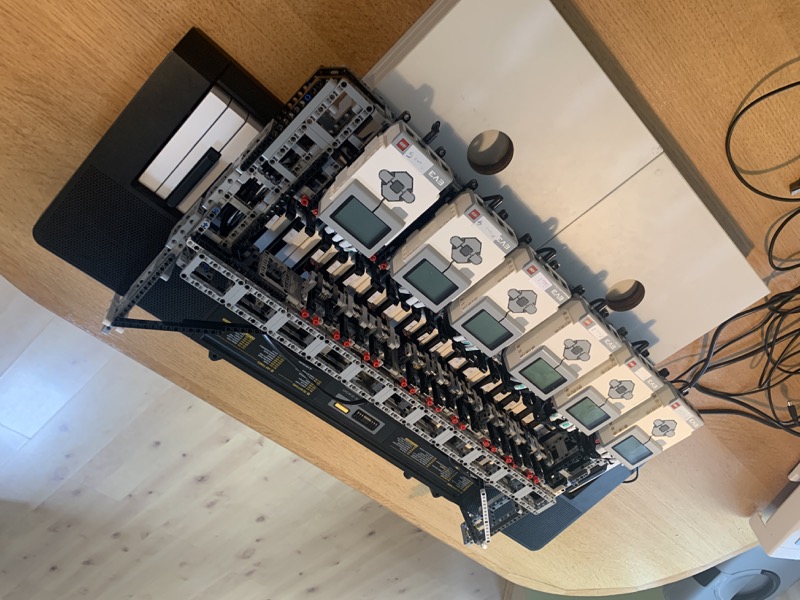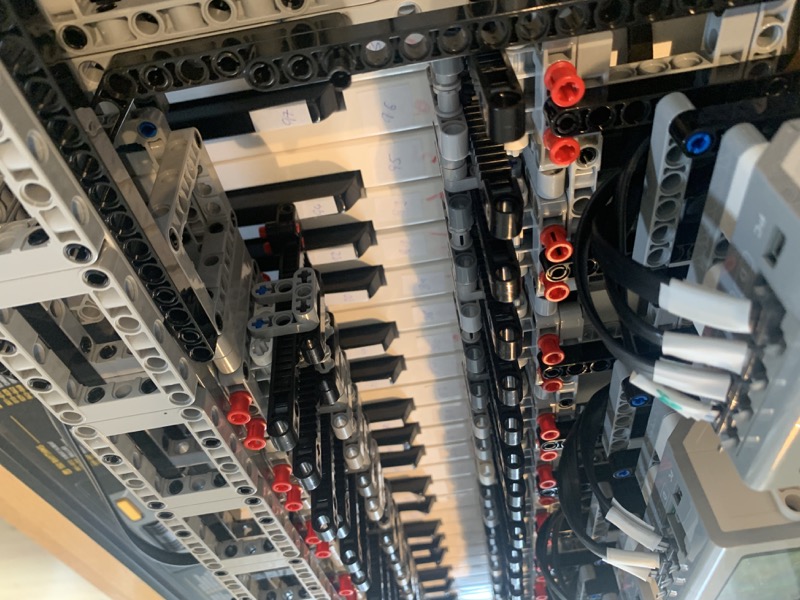Beethoven Would Wonder: Lego Robot Plays “For Elise”
Ludwig van Beethoven would probably be very surprised to hear his RHPv2 song For Elise. The latest robot from the Faculty of Electrical Engineering plays a composition that belongs to the repertoire of beginning pianists on electronic keyboards, but will soon be able to handle more demanding works on the large piano grand piano in Zenger's lecture hall.
The authors of RHPv2 are two master's students of the Cybernetics and Robotics program of the FEE. Martin Šrámek participated in the design and construction of the robot and Matěj Štětka solved the software side of things. The pair of developers is already behind the creation of Ludvík, the largest humanoid robot composed of more than 30,000 Lego pieces.
Lego also served as a building material in the case of RHPv2, which is composed of LEGO-Technic cubes together with components from the LEGO-Mindstorms series. “Preparation and assembly began about a year ago and has been interrupted several times due to ongoing lockdowns and other measures. The total work corresponds to approximately one month of work of our two-member team,”says Matěj Štětka about the creation of the new robot.
The selection of the song was not random. “Beethoven wrote it as a simple composition for a girl he loved who was not a skilled pianist. Now the robot also managed playing it. But a parallel with our second robot Ludvík - the namesake of van Beethoven - also played a role and last but not least, because it is a love song by our leader Martin Hlinovský,” explains Martin Šrámek.
The authors of RHPv2 acknowledge the inspiration of a robot, which was assembled in 2018 by student Martin Němec. His followers used a different type of engine - smaller, with a shorter reaction time, but with less torque. So the robot should be able to handle more dynamic songs. “The tempo of the songs is a parameter that we will be verifying, but I can say that it looks promising,” says Martin Šrámek.
The biggest limitation so far is RHPv2 that it cannot play two adjacent tones at once. Each of the motors controls two adjacent tones. When turned in one direction, the first tone plays, when turned in the opposite direction, the second, but so far the motor cannot turn in both directions at once. Fortunately, this problem does not manifest itself in many songs.
“As soon as the situation allows and the technical problem of connecting the robot to the piano is solved, we would like to organize a concert in Zenger's auditorium on the concert grand piano. The construction for attaching the robot, which will enable this, is already in development,” adds Ing. Martin Hlinovský, Ph.D., from the Department of Control Engineering, Faculty of Electrical Engineering, which provides supervision to both students.


